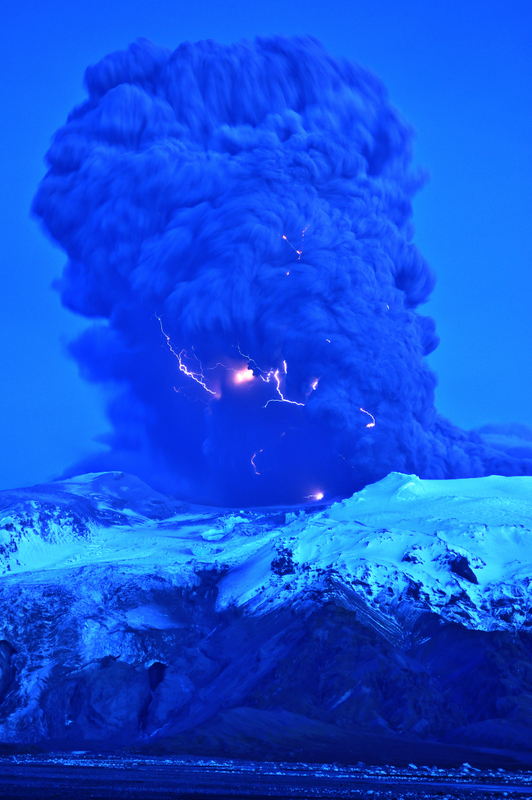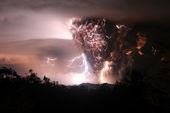
© AP
Iceland is known as the land of fire and ice and on the slopes of the Eyjafjallajokull glacier this has never been more true as these pictures show its volcano spewing molten ash into the sky at around 100 metres a second.
This is the dramatic crucible of lava and lightning which has grounded flights across the Atlantic and northern Europe, bring chaos to hundreds of thousands of passengers.
Ripping a half-mile fissure in a field of ice just over four weeks ago, the volcano ejected lava bombs and created forks of lightning, thought to be caused by charge-inducing collisions in volcanic dust. And, as these pictures taken late on Sunday show, it is still wreaking havoc.
As people in Britain and the rest of Europe are caught up with the unprecedented travel chaos caused by the eruption, those in Iceland are living with blankets of ash falling from the sky and fears of volcanic floods.
Almost completely blocking out an otherwise blue sky, the cloud released from the volcano resembles a tornado as it sweeps across the landscape.
On remote farms, animals, houses and nearby mountain ranges have been coated in grey as the wall of fog moves across the sky, creating the impression it is the middle of the night.
Comment: The jury's still out on whether the eruption of Eyjafjallokull merited shutting down European airspace for six days. While Sott.net leans towards this being an hysterical over-reaction from the point of view of air safety, the event itself is another significant marker as we approach catastrophic climate change brought on by the build-up of comet dust in the upper atmosphere. The marked increase in the number of strong earthquakes and volcanism strengthens
our theory that the planet's rotation is slowing down, however slightly, weakening the magnetic field and thus literally "opening up" the planet.
Cosmic Climate Change
What we suspect has really been happening, based on our research thus far, is that the upper atmosphere is cooling because it is being loaded with comet dust, which shows up in the form of noctilucent clouds and other upper atmospheric formations. The comet dust is electrically charged which is causing the earth's rotation to slow marginally. The slowing of the rotation is reducing the magnetic field, opening earth to more dangerous cosmic radiation and stimulating more volcanism. The volcanism under the sea is heating the sea water which is heating the lower atmosphere and loading it with moisture. The moisture hits the cooler upper atmosphere and contributes to a deadly mix that inevitably leads to an ice age, preceded for a short period by a rapid increase of greenhouse gases and "hot pockets" in the lower atmosphere, heavy rains, hail, snow, and floods.
Expect this trend to continue but don't believe in "man-made global warming". Whatever warming there has been, it's really a prelude to the way ice ages begin. Let's hope that there aren't any catastrophically large chunks in that stream of comet dust cycling through our solar system.



Comment: The jury's still out on whether the eruption of Eyjafjallokull merited shutting down European airspace for six days. While Sott.net leans towards this being an hysterical over-reaction from the point of view of air safety, the event itself is another significant marker as we approach catastrophic climate change brought on by the build-up of comet dust in the upper atmosphere. The marked increase in the number of strong earthquakes and volcanism strengthens our theory that the planet's rotation is slowing down, however slightly, weakening the magnetic field and thus literally "opening up" the planet.
Cosmic Climate Change